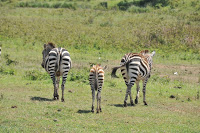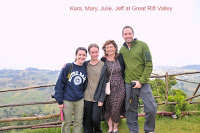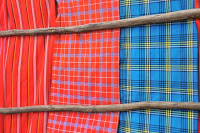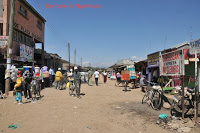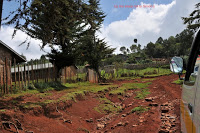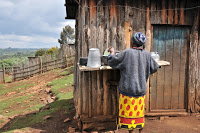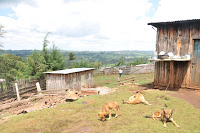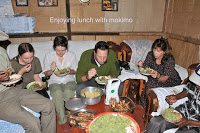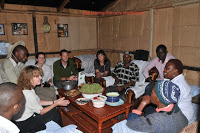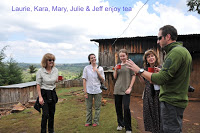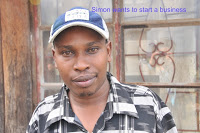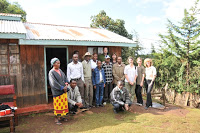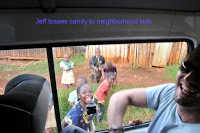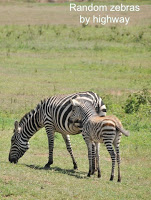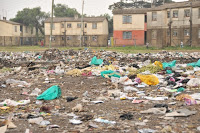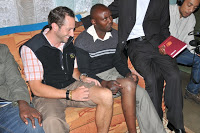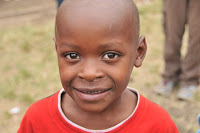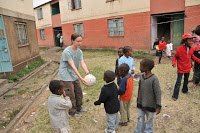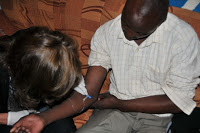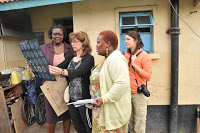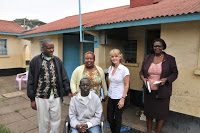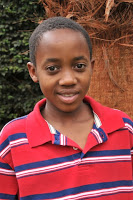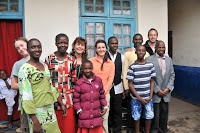Kenya Day 3: MP Shah Hospital Tour
Having a good discussion is like having riches. Kenyan proverb
Chilly weather continued in Nairobi, probably about 65 degrees. Jeff Salantai, Julie Winton, Kara Ryan and my daughter were all up by 7 am for a delicious buffet breakfast. Today we stayed in Nairobi, to visit the Health Ministry, the MP Shah Hospital, and the patients. Maureen again met us at the Southern Sun Hotel after breakfast and we set out in considerably less traffic. Within 30 minutes we arrived at the Health Ministry. We were disappointed to learn that Dr. William Maina, the director of non-communicable disease department, whom I met last year, was unable to join us due to a meeting. He did, however, graciously come to the parking lot to say hello and greet the American visitors.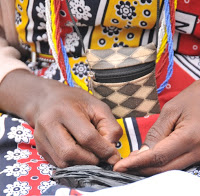

With time on our hands, all dressed up and nowhere to go, Maureen took us to the Westland market to buy souvenirs. My colleagues were all first-timers to Africa, and Africa has a beautiful and colorful array of gifts: from Masai warrior shields in red leather, to stone carved animals, to pottery, beaded jewelry and the colorful Masai blankets made of wool. All at bargain prices! Everyone got an opportunity to bargain the prices, although most Americans are not comfortable doing this. We did have with us Paul Kamau, Adam, Isaac and Jagadish, who helped translate and then negotiate. There were so many vendors, with blankets spread on the concrete, wares displayed, hawking for our attention. Jeff and I decided to visit the vendors in the rear, as they seemed neglected. We laughed that it was like a hemophilia meeting, where the vendors in the front often get all the traffic!
We decided to have a sit down lunch (when traveling to the field to visit patients we often skip lunch entirely!) and Jagadish, who is Kenyan but also Indian, suggested a good Indian restaurant. The food was amazingly good and we relaxed and had many laughs. Our favorite moment was when Julie mistook the jalapeño pepper for a green bean (a green bean, Julie?) and we caught her reaction on film!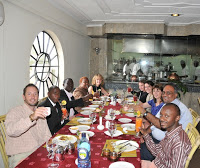
After lunch came the real purpose of the day: to tour the MP Shah Hospital and then meet the patients. Dr. Paresh Dave, hematologist, took us on a tour of the beautiful, private hospital, where many hemophilia patients find expert treatment. Julie especially was intrigued with their level of care. The hospital is clean and efficient. When asked what he needed that we could help supply for his hospital, we were surprised to learn that Dr. Dave requested butterfly needles! Imagine. The things we often toss away if they are not the preferred size in our factor box. Julie was proud to relay that Alex (still en route to Africa at that point), age 16, had solicited two pallets of medical supplies for the MP Shah and shipped them, courtesy of his dad, Eric Hill. Though delayed in customs, the shipment was in Nairobi and butterflies were on their way.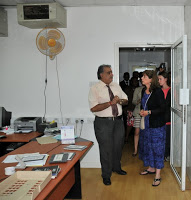
After the tour, we went into the lecture room to meet the patients. I was beaming with joy to see so many I had met over the past two years. Flora, a lovely woman whose son Victor had passed away at age 15, just four years ago. Florence Odwar, who we had just visited on Monday, and her daughter Moline, who has VWD; Charles, who I had visited last year at his home, far outside Nairobi, now living in Nairobi and working, and proud father of baby Alvin; Gladys with son Justus and nephew Kevin, who wants to be a doctor. I gave lots of hugs to so many I knew; the Kenyans are truly warm and gracious, and really know how to make you feel welcome!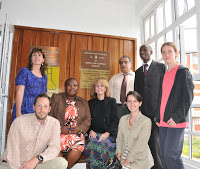
Dr. Dave opened with a warm and even funny speech about how much they have progressed as a team, and how he will commit to continue to help. Maureen reviewed the history of their society, and complimented her team on their help. She stressed the importance of patient and parent involvement. I also gave a brief speech to remind everyone that our foreign visitors were here to raise funds, so that we would have the money to start micro loans and scholarships through Save One Life, our nonprofit that works at a grassroots level in developing countries.
Flora spoke, Kevin spoke… it was very heart wrenching to hear of the loss of some children, but stunning to know even those who lost children are still working with the society so that other families would not suffer. These include Maureen herself, whose five-year-old son Jose died just four years ago.
Maureen asked Julie, Jeff, Kara and my daughter to say a little something, so each guest got up and spoke. Jeff was very emotional in thanking everyone, as he realized fully his blessings in life compared to those with hemophilia in Kenya. Julie could barely speak as she was overcome with emotion, facing the towering strength and dignity of the parents, despite their losses and suffering; Kara thanked everyone for the privilege of letting them be a part of their lives.
After the speeches, we had tea and snacks, and Maureen and I handed out toys we had brought from the States. Stuffed animals are not common in Kenya, so these were a prized commodity! We also gave away kazoos, balls and T-shirts. 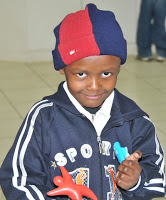
Julie had a brilliant and spontaneous idea: with all the patients present, why not conduct a home-infusion workshop? She simply got to work, and found her first volunteer. Many of the children have very hard-to-find veins, but Julie is a pro! Before she knew it, every patient in the room lined up for an infusion. In fact, we left her there to go back to the hotel to work out!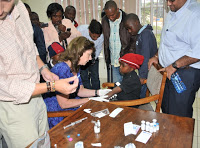
Kilimanjaro looms in our mind and I was getting a bit nervous not working out, after an intense two months of working out. I hit the gym and gave a good hour of cardio. We joined Julie, Jeff and Kara later than evening for a light dinner to review the remarkable day. “Having the good discussions” by the patients, and the home visits yesterday, have given them all a good slice of how Africans live with hemophilia, their obstacles to care and the culture that keeps patients quiet and uncomplaining. 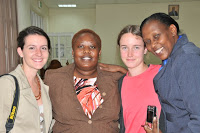
Yeah, they are in love with Africa. I knew it would happen, as it happened to me, too, long ago.

